The Best Fundraising Software
We reviewed the top fundraising software for nonprofits of all sizes to help manage donor information, hold silent auctions, and meet funding goals.

- Strong CRM with fundraising capabilities
- All versions include unlimited users
- Integration with Constant Contact and QuickBooks Online
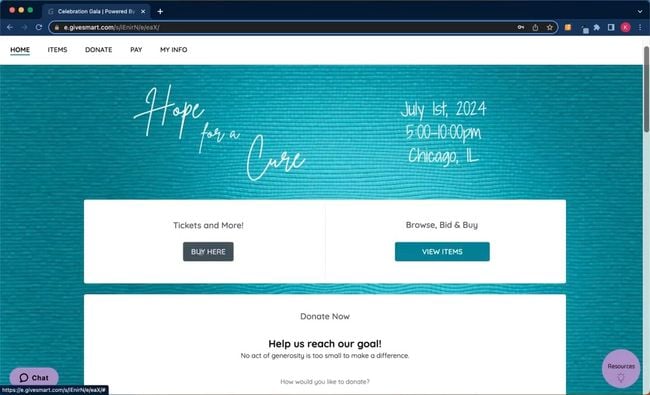
- Multiple payment processing integrations
- Reporting includes Google Analytics
- Live-event video streaming
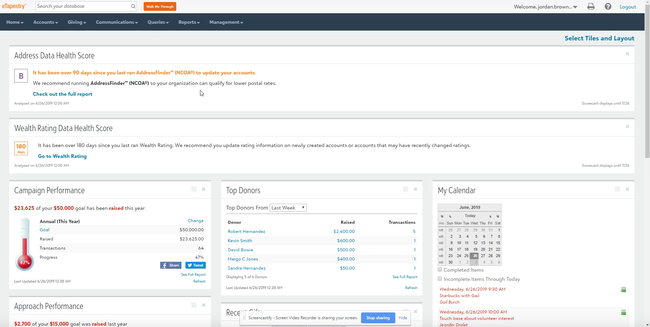
- Can store numerous details into a single contact record
- Easy to run queries and generate letters
- More simplistic version of Raiser’s Edge NXT
Fundraising software is designed to enhance donor management, donation collection, campaign analysis, and engagement strategies. Here’s a rundown of our top products based on our internal review process and user reviews.
- DonorPerfect: Best Overall
- GiveSmart: Best for Silent Auctions
- Blackbaud eTapestry: Best Donor Management
- Bloomerang: Best Volunteer Management
- Abila Fundraising Online: Best Analytical Tools
- Donorbox: Best Integration Options
- DonorSnap: Best for Transparent Pricing
- Qgiv: Best for P2P Fundraising
DonorPerfect - Best Overall
DonorPerfect is a fundraising growth platform that helps create initiatives, cultivate relationships, and collect more donations. We chose it because it manages all kinds of constituent data such as donors, prospects, members, volunteers, foundations, alumni, and event participants. The software can be used to run many fundraising campaigns, like annual giving, grants, auctions, direct mail, online giving, and capital campaigns.
We also liked that DonorPerfect doesn’t require the use of any outside tool to operate, making it an all-inclusive fundraising and donor management platform. The software can easily process both credit card payments and bank drafts, all while providing reports and analytics to uncover hidden trends and develop strategies to improve fundraising efforts.
GiveSmart - Best for Silent Auctions
GiveSmart offers an online silent auction tool with mobile bidding to help nonprofits meet their fundraising goals. Donors can bid for items right from their phones, complete with searchable categories and a self-checkout portal. Also, users will receive real time notifications during the auction, so they’re always up to date on their bid status. This gives your top donors easy access to your silent auctions, helping you drive engagement.
Additionally, the silent auction module is customizable to fit your needs. Create a landing page tailored to your catalog, with item packaging, custom description sheets, and embedded videos and images. This allows you to display your auction items however you need while maintaining an organized layout. There’s even a live leaderboard that displays leading bids to drive interest.
GiveSmart has flexible feature packages based on your needs. Their fundraising and event management plan offers unlimited users and diverse fundraising tools, including silent auction and bid management. There’s also the Donor CRM, which you can purchase individually or in one full suite. Unfortunately, the prices are not listed publicly, so must receive a custom quote.
Blackbaud eTapestry - Best Donor Management
Blackbaud eTapestry stands out for its built-in CRM capabilities, including a centralized donor database, customizable email templates, and advanced segmentation tools based on donation history, interests, and behavior. eTapestry acts as an all-in-one tool for managing charitable programming activities in one place. The holistic view of donor relationships and the campaign performance provides a faster turnaround of what’s working and what isn’t.
eTapestry also works to boost engagement through email marketing, online donation forms with payment processing, content tracking, event management, and much more. eTapestry’s popularity has historically revolved around its low cost of entry, and Blackbaud advertises the solution as a more affordable alternative to their Raiser’s Edge NXT tool.
Bloomerang - Best Volunteer Management
Bloomerang is a fundraising software that goes beyond basic CRM and donor management tools. The system includes a fully integrated platform that helps nonprofits recruit, schedule, communicate with, and retain volunteers.
Organizations can build detailed volunteer profiles with custom fields for skills, certifications, interests, and availability. This makes it easy to match the right people to the right roles. Admins can configure role requirements like max volunteers per shift or required training and manage schedules using a drag-and-drop shift calendar. Volunteers can browse open shifts based on filters like location and role type and schedule themselves through mobile-friendly portals.
The volunteer management module is an optional paid add-on to the Bloomerang fundraising platform. It is best suited for organizations with active volunteer programs and recurring event staffing needs, as smaller nonprofits may not need the extra investment. Pricing for Bloomerang starts at $40/month for basic tools, $125/month for donor management, and $119/month for volunteer management.
Abila Fundraising Online - Best Analytical Tools
Abila Fundraising Online made our list because of its real-time performance metrics. These include donor participation, conversion rates, gift frequency, source tracking, donation totals, and much more. Overall, Abila helps support events and campaigns, with the goal of increasing engagement between donors, volunteers, and participants. A modern interface for donation pages collects donations over multiple devices such as tablets or mobile devices.
A part of the Abila family, the solution is a great compliment to Abila MIP Fund Accounting, one of the top financial management solutions on the market. Using both provides a fully integrated method of tracking budget progress and donor data. Abila’s suite handles all these tasks while meeting compliance and reporting standards.
Donorbox - Best Integration Options
Donorbox made our list because of its integration options with website builders, social media platforms, and accounting software. Popular apps include WordPress, Squarespace, Mailchimp, Salesforce, and QuickBooks. Through Zapier, Donorbox connects with over 3,000 web apps. This allows organizations to automate workflows between Donorbox and tools like Google Sheets, Slack, and many others.
Beyond integration capabilities, DonorBox offers a user-centric design and flexible features, allowing you to customize forms, set up recurring donation options, and manage donor information. The platform supports various payment methods like credit cards, PayPal, Apple Pay, Google Pay, and ACH bank transfers. With Donorbox, you can also leverage reporting and analytics tools to gain insights into your fundraising activities.
DonorSnap - Best for Transparent Pricing
DonorSnap earns its spot by offering transparent pricing that gives unlimited user access to its entire suite of features. It includes customizable thank-you letters, integrated email marketing, volunteer tracking, event management, and custom online donation forms.
Unlike many platforms that lock key features behind tiered plans, DonorSnap uses flat-rate pricing based solely on the number of contacts or donors in your system. With unlimited users included, your cost only increases as your donor base grows—making it an ideal choice for organizations that want full functionality without unpredictable add-ons or surprise fees.
While DonorSnap’s pricing model is refreshingly clear, it may not be the most cost-effective choice for very small non-profits only needing basic features.
Pricing starts at $50 per month for up to 1,000 contacts, then increases to $70/month for 2,500 and maxing out at $250/month for 30,000 contacts. While the pricing may be higher than freemium tools that only offer one or two core features, DonorSnap gives even the smallest nonprofits access to the same powerful tools used by larger organizations. Each plan includes the full feature set and unlimited users.
Qgiv - Best for P2P Fundraising
Qgiv stands out as a top platform for peer-to-peer (P2P) fundraising, offering robust event management capabilities. Nonprofits can create and manage fundraising events with ease, from registration and ticket sales to participant tracking and engagement. The platform’s customizable fundraising pages allow supporters to personalize their efforts, sharing their unique stories and connecting with potential donors on a more personal level.
Qgiv’s social sharing capabilities further enhance its P2P fundraising strength, enabling fundraisers to share their pages across various social media platforms, thereby reaching a wider audience. The platform also offers robust reporting and analytics, giving organizations the insights they need to monitor campaign performance, recognize top fundraisers, and optimize future efforts.
What is Fundraising Software?
Fundraising software applications allow for tracking the acquisition of donor contributions and for facilitating related communication and data management tasks. A subtype of nonprofit software, fundraising platforms is a critical IT resource for nonprofit organizations that depend on the continued support of contributors to deliver resources and services.
How much more could your organization do with double the donations? What about triple? Utilizing software to improve your fundraising efforts can show what a difference your organization can really make. Important functionalities of fundraising software include the following:
- Reduce the workload associated with fundraising tasks via automation of repetitive tasks
- Increase per-donor giving rates based on the coordination of optimal follow-up communication
- Improve rates of secondary contributions from donors, even through peer-to-peer fundraising or crowdfunding campaigns
Start meeting your fundraising goals and increasing your outreach with all-in-one nonprofit fundraising software.
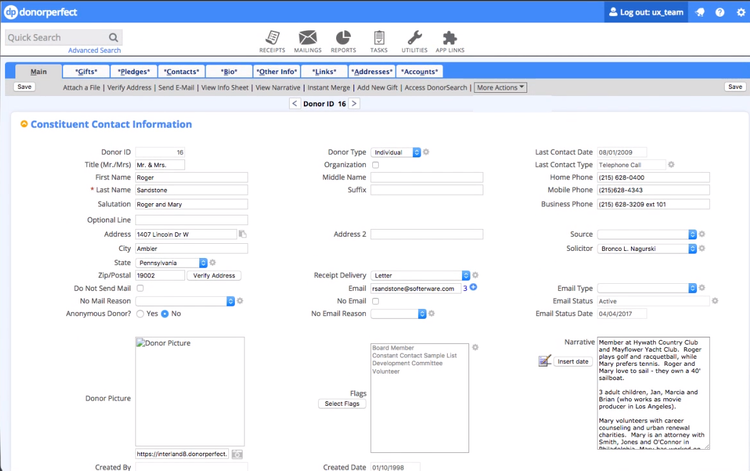
Key Features
| Feature | Description |
|---|---|
| Donor database | Personalized donor profiles track transactional/communication histories with past and prospective donors; Support volunteer and member registration access to specified privileges, such as auction bid, gift programs, or other forms of donation |
| Contact management | Constituent relationship management allows for information about contacts and communication/events histories related to contacts to be entered into a centralized management system |
| Campaign management | Organize campaigns from start to finish, anticipating results and using real-time data to measure milestones |
| Event tracking | Support for event scheduling such as calendaring and ticketing |
| Fundraising/campaign tracking | Gather data and report on analytics to identify which fundraising activities have yielded the best results, enabling refinement of ongoing fundraising efforts |
| Template management | Create, store, and edit fundraising templates to refine the effectiveness of donor communication (email, mailers, text, etc) |
| Online donation portal | Virtual fundraising and donation portals provide another access point for potential donors, providing a means of increasing fundraising revenues by tapping into new channels for fundraising, i.e., text-to-give |
| Credit card processing | Allow for donation payments via credit card or other cashless methods to increase fundraising totals |
| Matching contributions tracking | Increase per-donor giving rates through corporate matching programs |
CRM and Fundraising
In for-profit businesses, a customer relationship management (CRM) tool, intended to build and strengthen the relationship with clients. For nonprofits, those clients are instead organization members, volunteers, and donors. Rather than investing in a full CRM, this contact management is usually accomplished through organizing easy ways for donors to contribute online or in-person at events.
Donor vs. Fundraising Software
Fundraising and donor software are sometimes used interchangeably in conversation but hold different meanings in practice. Fundraising software helps you acquire donations through communication and campaigns, while donor management software is more of an industry-specific CRM tool to record data about donors such as giving history, amount of gifts, and personal details. In short, fundraising and donor management software can both include nonprofit CRM tools. There are times where one may be more appropriate than another, depending on the exact nature of your nonprofit organization.
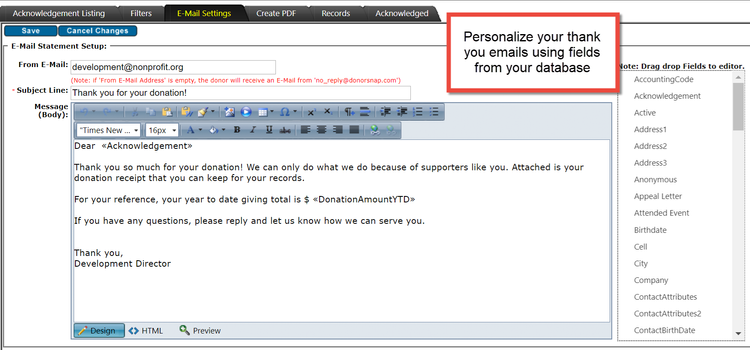
Primary Benefits
Fundraising should be fun, simple, and managed efficiently. Through specialized software, this can be possible for the smallest NPOs to large nonprofits:
Simplify Your Fundraising Efforts
If an organization wants to know where they are with their giving and how much they owe, this should be a simple thing to report. With the right fundraising software, find out who is paying your organization, how much, and when. Fundraising software can help nonprofits streamline important reporting capabilities in order to:
- Track gifts, pledges, soft credits, matching gifts, in-kind donations, grants, corporate sponsorships, and memberships.
- Create reports for your internal tax purposes, as well as provide donor statements for donors’ tax purposes as well.
Fundraising software can be used for after-the-fact reports and provide valuable information on past successes before your new fundraising efforts even begin. Some software can even help identify the key demographics of your donating community. Demographic insights allow you to predict probable donors so you can target your efforts accordingly. This can greatly improve the success of your fundraising campaigns.
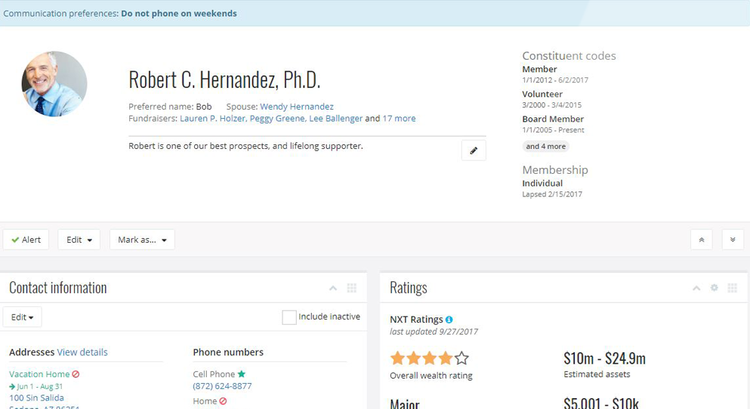
Save Time and Money by Streamlining Your Processes
Running a nonprofit involves all the hassle of a for-profit business with razor-thin budget margins. Paying excessive platform fees for different software solutions can take away valuable resources from your advocacy work. The fundraising software you choose should pay for itself by increasing donations, freeing up time by increasing operational efficiency, and improving donor satisfaction. With the right software, every letter, email, phone call, activity, donation, campaign, event registration, and interaction is tracked in one place.
Go Virtual with Online Fundraising Software
The Internet has truly transformed the way nonprofits operate. In-person event fundraising isn’t enough when social media and communication tools allow anyone access to online donation pages. Whether it’s connecting with constituents or processing online donations, your organization has many digital tools available to:
- Process donation and registration transactions via your website.
- Set up programs for recurring gifts and credit/debit card payments.
- Use online event management features for collaborative efforts between staff and volunteers.
- Link your system with social networking tools.
Donor-focused fundraising strategies can be easy to implement and track with the right solution.
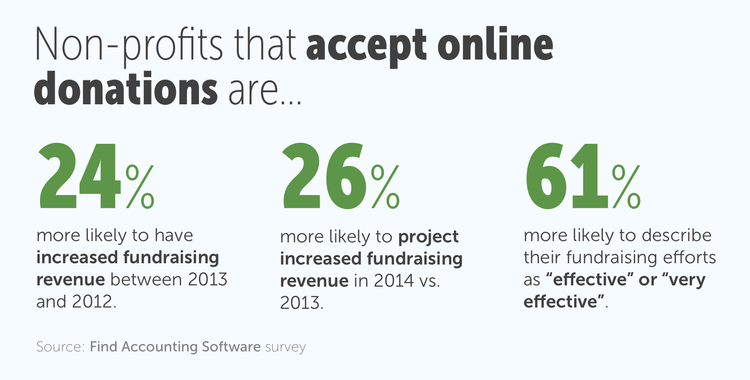
Fundraising Event Management Tools
Does your organization host fundraising events? Organize and optimize events such as galas, silent auctions, balls, tournaments, luncheons, conferences, and meetings with software to:
- Get comprehensive, template-based registration forms customizable to your events.
- Automate emails generated for invitations, registration, donation acknowledgments, etc.
- Solicit and manage volunteers (select locations, assignments, and individual tasks)
- Copy, clone, and revise event details from year to year.
- Report on all participants and sponsorship history across all events.
Industries Served
Fundraising software is primarily designed for nonprofit organizations, though it can also be used by:
- Schools
- Non-governmental organizations (NGO)
- Startups
- Animal shelters
Our Fundraising Technology Trends Survey found that while 4 out of 5 fundraisers felt new technology leads to increased success, only 1 in 3 admitted to having the tools they needed to implement a path to that success.
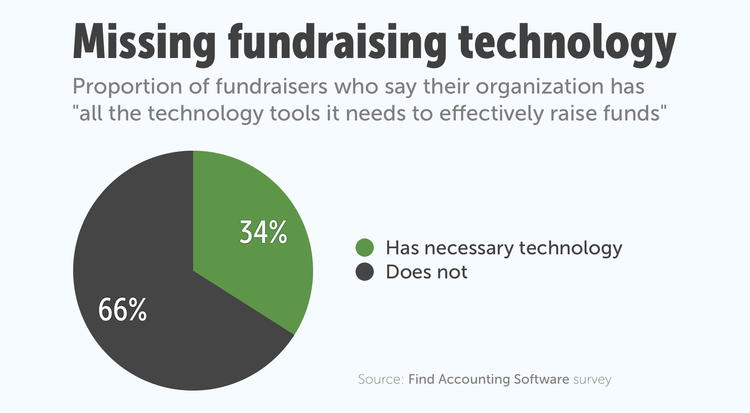
Pain Points
Fundraising software solves many challenges your nonprofit faces, including:
Low Donor Engagement
Some fundraising campaigns will run year-round while others will run at certain times of the year. Nonprofits need to understand that all donors give for different reasons and in different quantities at different intervals of the year. Being able to time your fundraising campaigns accurately will help save your organization time and effort trying to engage donors who are not ready to give.
Retaining Donors
One of Blackbaud’s more recent Charitable Giving Reports found the average donor retention rate for first-year donors ranges from 21-29%, depending on the platform they used to live on. This means that for every 10 new donors your organization acquires via fundraising efforts, only 2 to 3 of them will return. Fundraising software helps companies better nurture their relationships and retain donors.
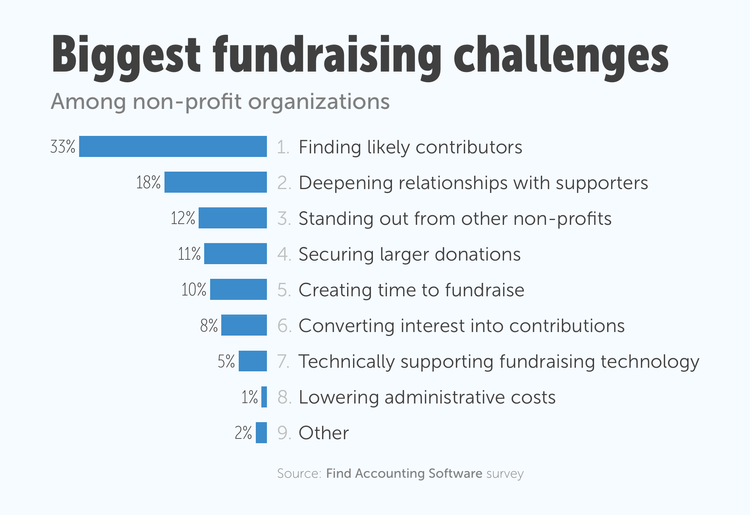
Market Trends
Some of the top trends in the world of fundraising software include:
Integration with QuickBooks
As QuickBooks is one of the most popular accounting software solutions, many fundraising software solutions offer integration with the platform as an add-on. For example, solutions such as DonorPerfect allow you to record fundraising and donation efforts in their software and send data back to QuickBooks to eliminate double data entry and give more of a complete audit trail. All versions of QuickBooks, including QuickBooks Online can be used by nonprofits.
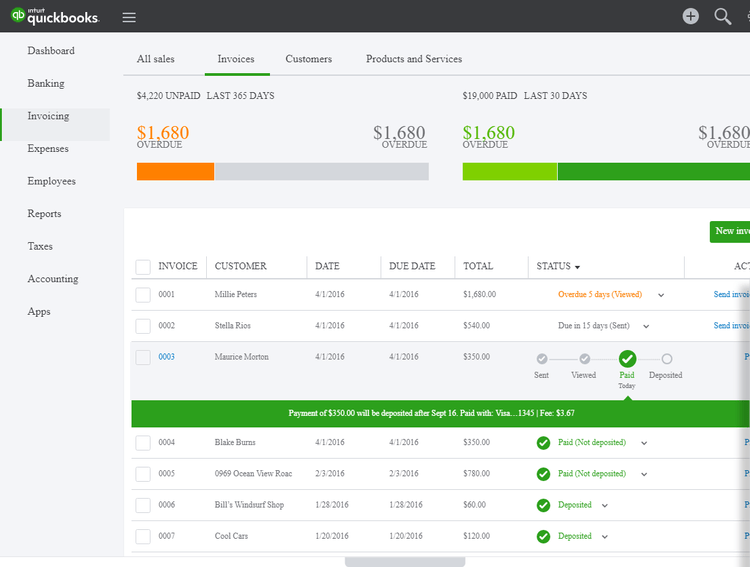
Tracking Charitable Donations in Real-Time
The occasional charitable donation can add up over time. For large fundraisers, software can automatically calculate how much money has been raised in real time, demonstrating how close your organization is to meeting fundraising goals. Fundraising systems with accounting interfaces make it easy to transfer transactions directly to your accounting system.
Online Fundraising
The Charitable Giving Report from Blackbaud found online giving has grown 9%, with the average online gift rising as well. 28% of all online transactions were made with a mobile device. Fundraising software that provides an organization with the ability to have donors pay online and even via their mobile devices should have a net positive on your charitable goals.
Monthly Giving Programs
While the donor retention rate for first-year donors may range from 21-29% (mentioned above), average donor retention rate is at 40-45%. Implementing a monthly giving program can increase this figure as high as 85-90%.
Innovative Web Technology
It’s no surprise technology is improving fundraising. Some of the key takeaways are how experts are trying to reach new donors in new places (via social media), tell stories more vividly (with video), and make giving easier for contributors (through mobile giving).
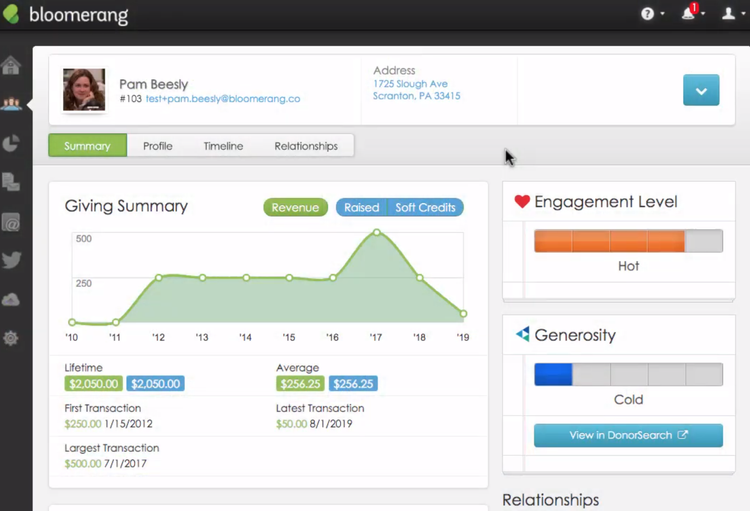
Pricing
Fundraising software pricing can vary dramatically depending on organization size, feature needs, and vendor structure. While some platforms offer free or low-cost plans for small nonprofits, others charge higher fees in exchange for deeper customization, integrations, and scalability. Most systems price based on factors like contact volume, features, or number of users.
Below is a general overview of the typical annual cost of ownership for fundraising software:
| Tier | Annual Cost | Typical Features | Examples |
|---|---|---|---|
| Starter | $500 – $3,500 | Core donor CRM, basic online forms, limited reporting, email acknowledgments | DonorSnap, Donorbox, Little Green Light, Trail Blazer |
| Growing | $3,500 – $10,000 | Full donor CRM, integrations, volunteer/event tracking, multi-channel outreach | Bloomerang, DonorPerfect, Keela |
| Advanced | $10,000 – $25,000 | Automation, segmentation, P2P fundraising, customizable dashboards and analytics | Neon CRM, Kindful, Virtuous CRM |
| Enterprise | $30,000+ | Custom workflows, advanced integrations, multi-department support, APIs | Blackbaud Raiser’s Edge NXT, Salesforce Nonprofit Cloud |
Is There Free Fundraising Software?
Yes, but most free fundraising tools come with trade-offs. Many entry-level systems offer free versions with basic donor tracking or limited online giving capabilities. Solutions like Donorbox and Qgiv offer free plans with core tools included but apply processing or platform fees to donations. Others, like Little Green Light, may offer affordable entry points but scale in cost as your donor base grows. In contrast, systems like DonorSnap provide full access to all features at a flat rate, offering more transparency but with a paid-only model.
Free software can work well for very small or early-stage nonprofits, but for growing organizations, investing in a paid platform often provides more control, scalability, and long-term cost savings.





















































